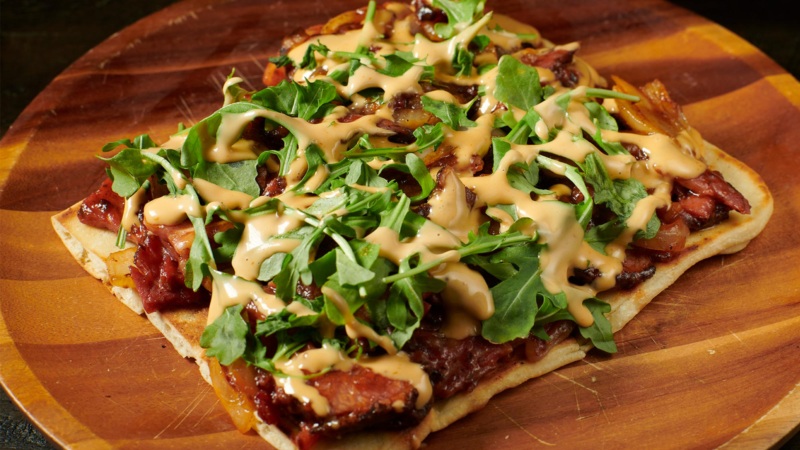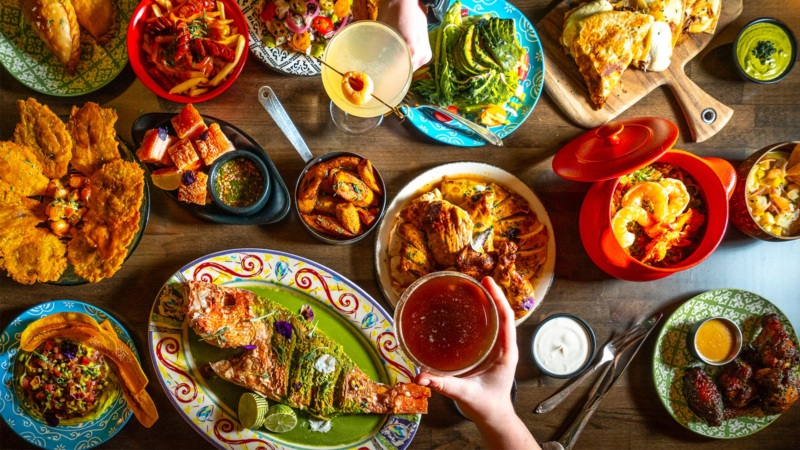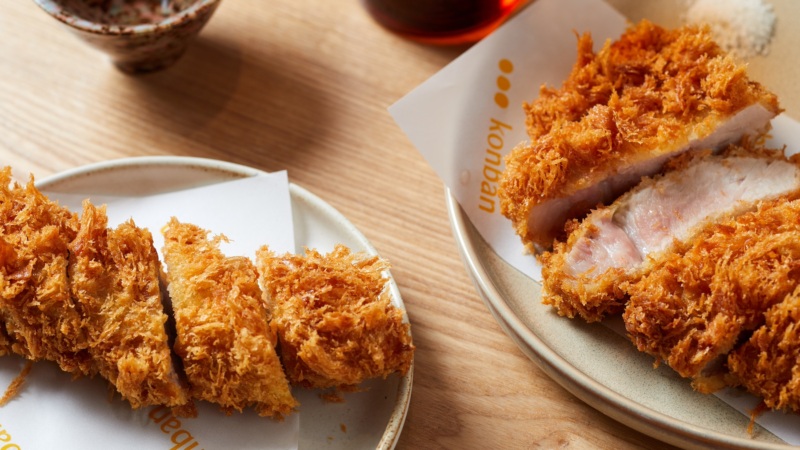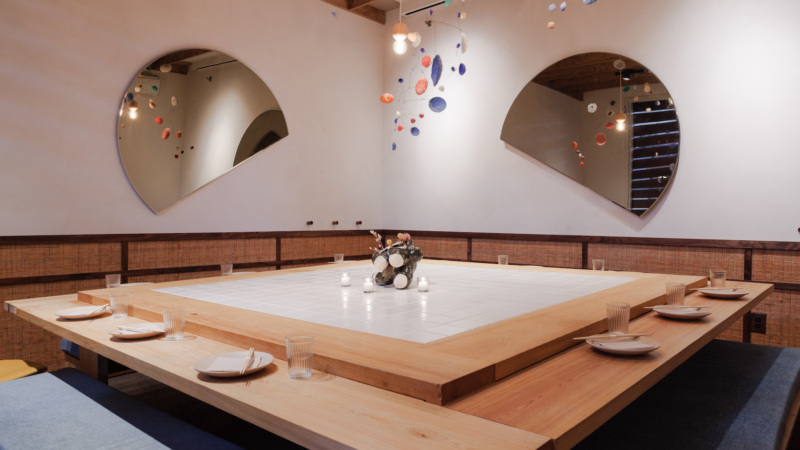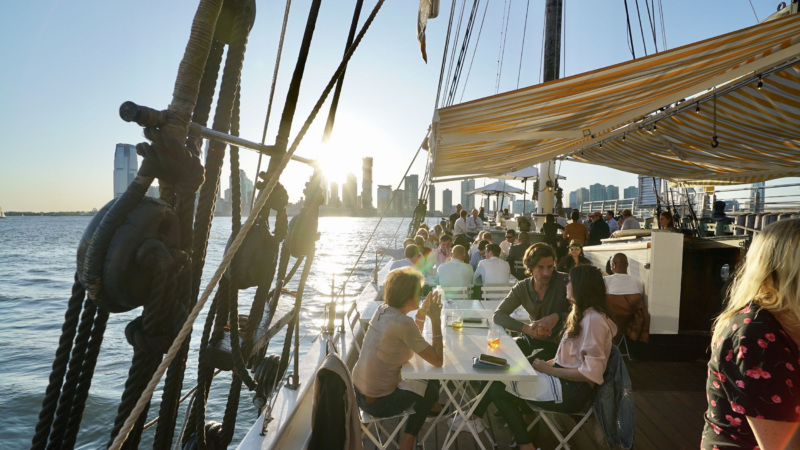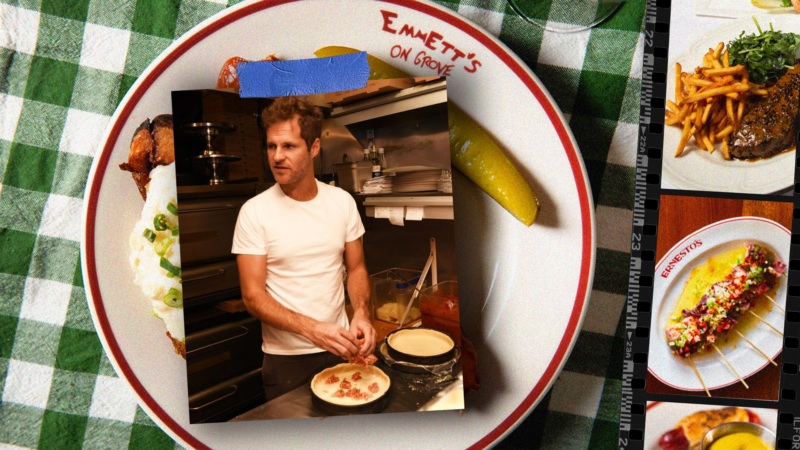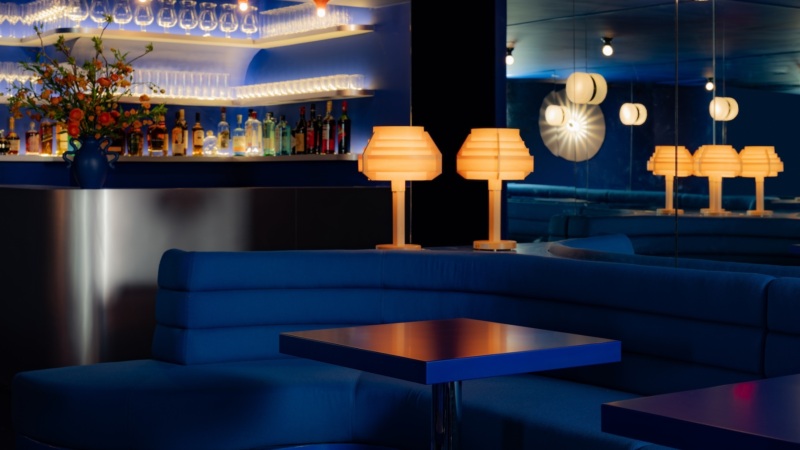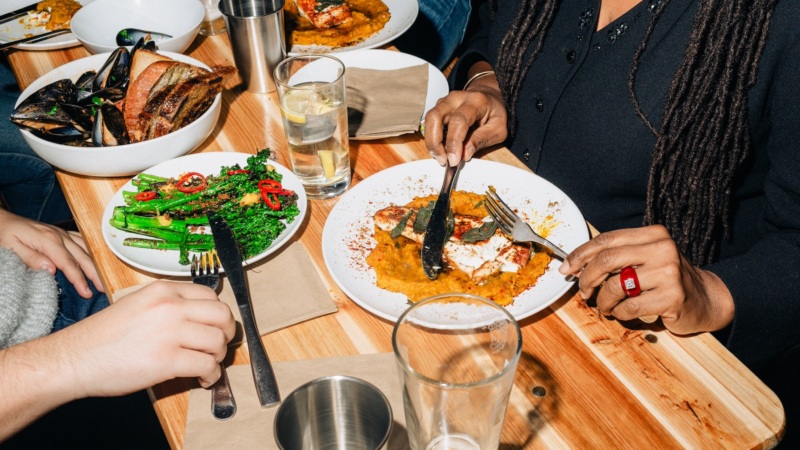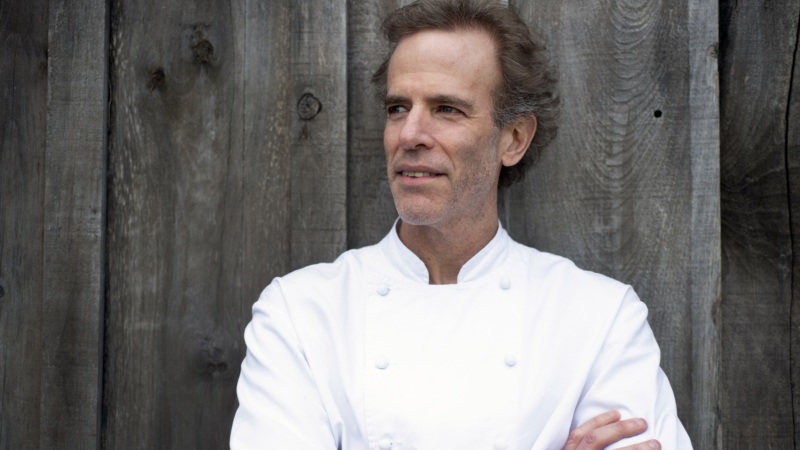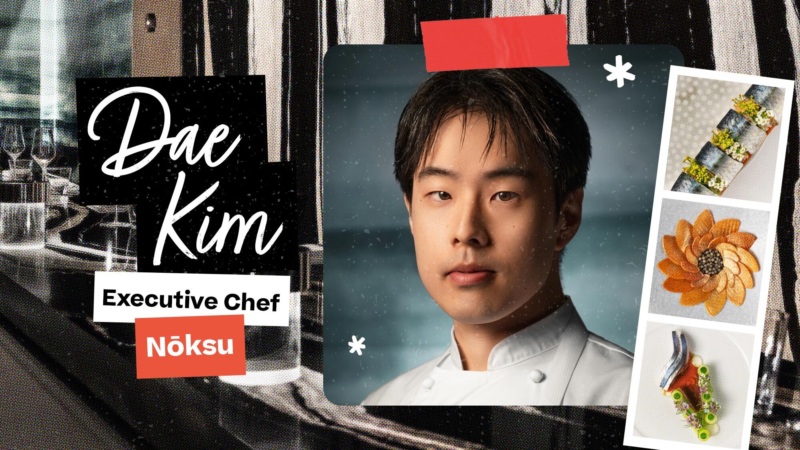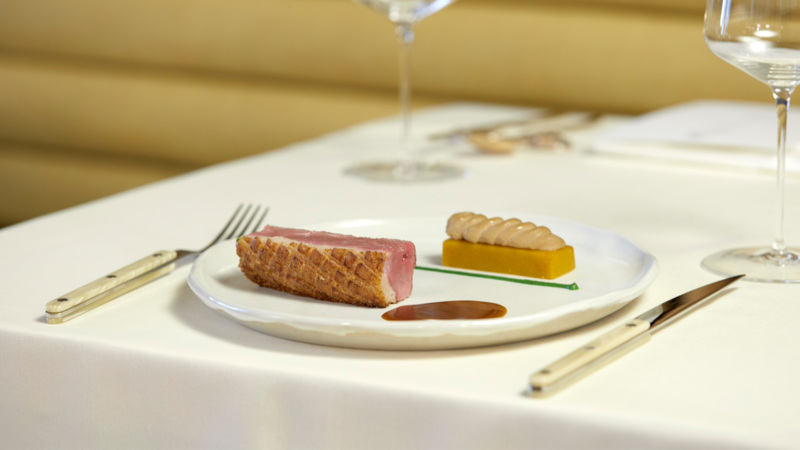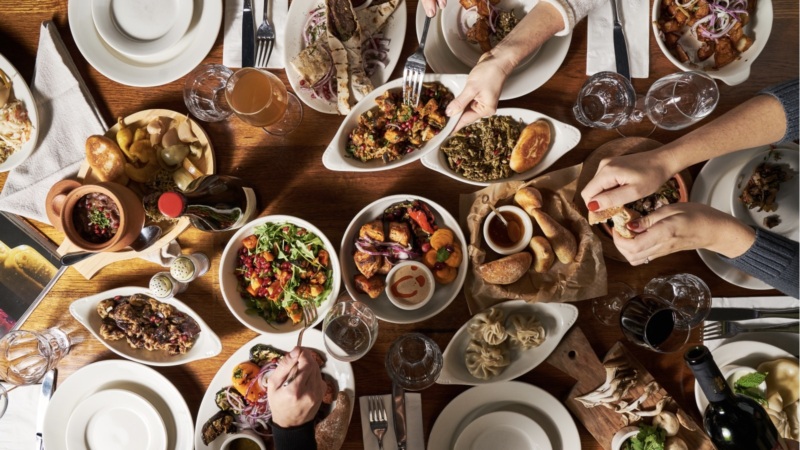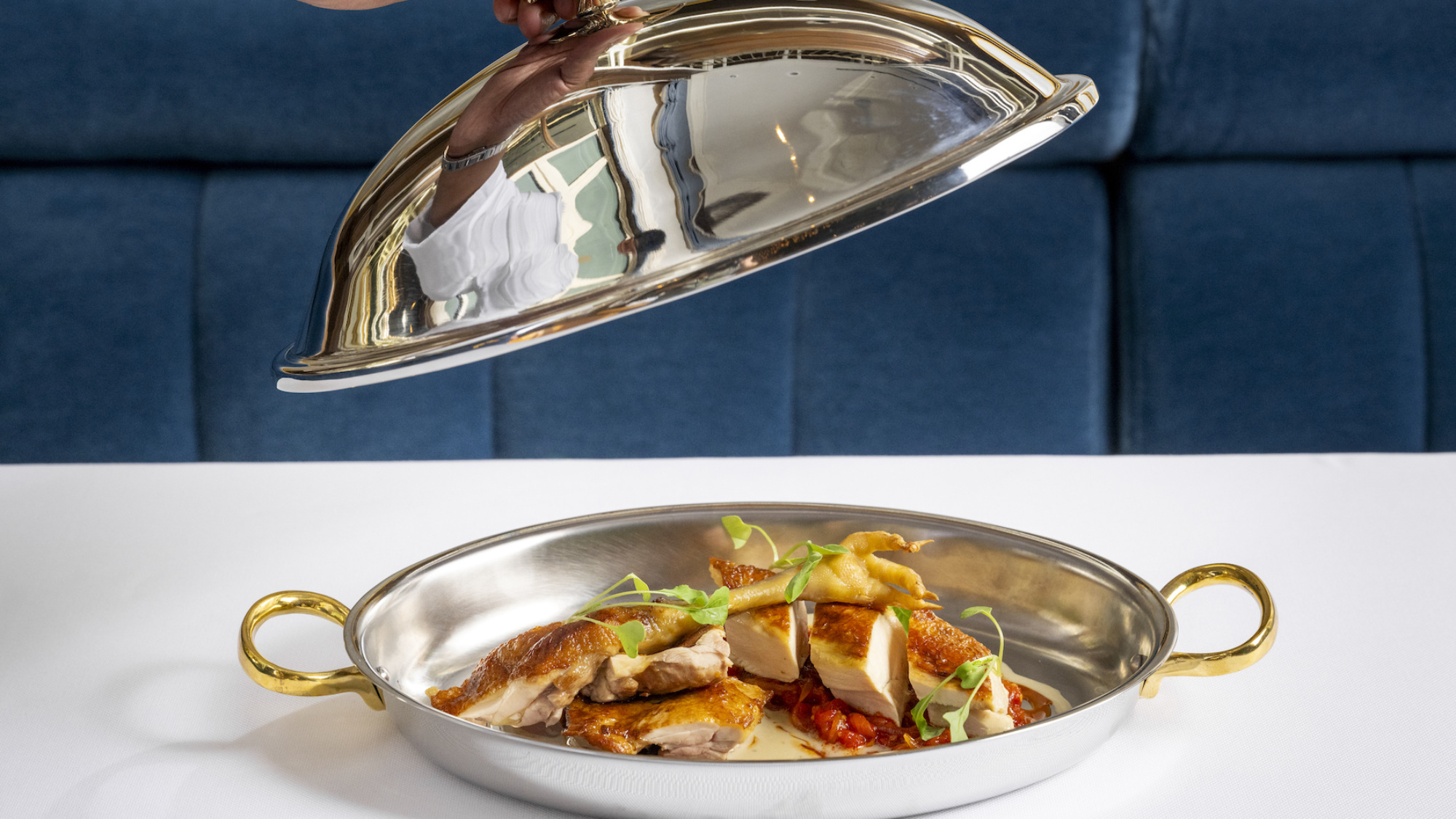
Andrew Carmellini Is Out to Prove Fine Dining Is Anything But Over
A celebrated chef with sought-after restaurants all over the U.S., Andrew Carmellini knows how to create dining concepts that resonate with a hungry audience. In fact, many of his hot spots have been known to strike gold with viral hits. Take, for example, the Suprême croissant at Lafayette Grand Café & Bakery, or the frosé at Bar Primi. In short, his restaurants have helped define the way we eat and drink in New York, and elsewhere. But for his latest undertaking — Café Carmellini, a fine-dining showpiece inside the new Fifth Avenue Hotel in NoMad, opening on Nov. 2 — he’s forging ahead with a different approach: more old-school in scope and style, and less about hoping for another viral hit. “I think now, I don’t want anything to go viral,” Carmellini says. “It’s a blessing and a curse.”
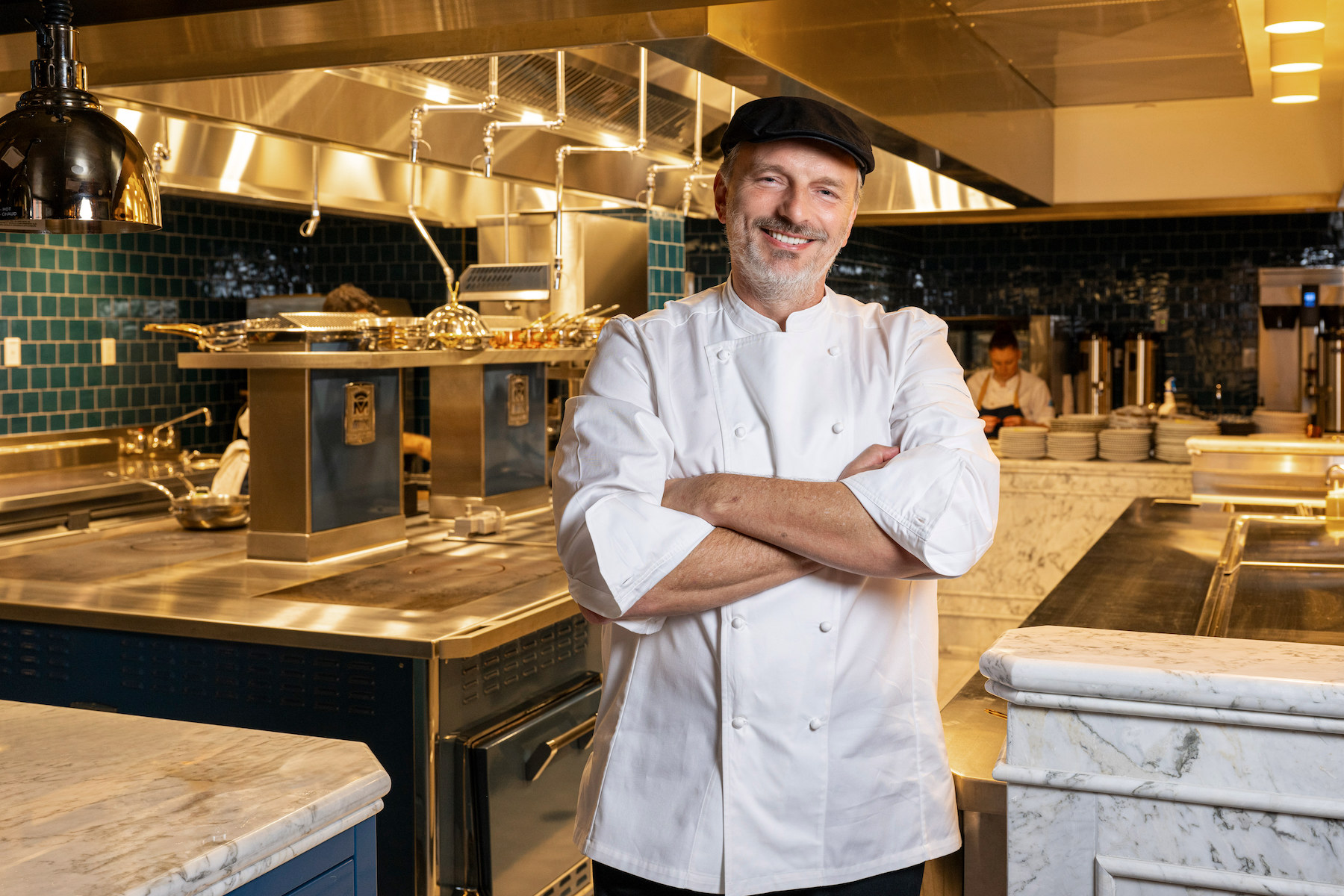

For Café Carmellini, there’s a lot at play as far as references and personal history are concerned. For one, it marks Carmellini’s exciting return to fine dining after a string of neighborhood restaurant hits like Bar Primi and The Dutch. Today, it’s arguable that Carmellini is better known for those restaurants than for the likes of Locanda Verde and Carne Mare, but for more than 20 years, he worked in the kitchens of award-winning white-tablecloth restaurants like Lespinasse, Le Cirque, and Bar Boulud, before striking out on his own with Noho Hospitality. While he could have remained on a path paved by Suprême croissants and frosé, Carmellini says reuniting with his professional roots was something he’s thought of for years. “I knew the itch [to do fine dining] would come back one day,” he says. “But you need the right environment for it.”
And the right environment couldn’t be grander than it is at the Fifth Avenue Hotel. A stunning McKim, Mead & White beaux-arts building (once a private residence then a bank then a crumbly office tower) transformed into a luxury boutique hotel, with interiors by designer-du-jour Martin Brudnizki, seems like the perfect match for Carmellini, who has been overseeing hotel culinary programs for years now (See Leuca and Westlight). His gut reaction — that this was indeed the correct moment for a professional pivot — was almost immediate. “Walking into the space, seeing it very raw (and by raw, I mean crumbling), we immediately thought, ‘Oh, this could be cool,’” Carmellini recalls. “It was no more calculated than that, no more than a feeling.”
Building on a feeling, however, is when the real work begins. And for Carmellini to put his name on a project for the very first time, things got personal. “It’s not just an ego trip,” he says. Instead, Café Carmellini is an homage to his family’s legacy in food and hospitality, which started in Tuscany with a 120-year-old coffee importing business, and includes an Italian grandfather who landed in New York to work first as a waiter and then a maitre d’ at the now-defunct Claremont Inn in Riverside Park. “Connecting to this lineage meant a lot to me,” he says. He also chose an Italian French menu because half of his family is from Italy and the other half is from France, where they once had a foie gras farm in the Languedoc.

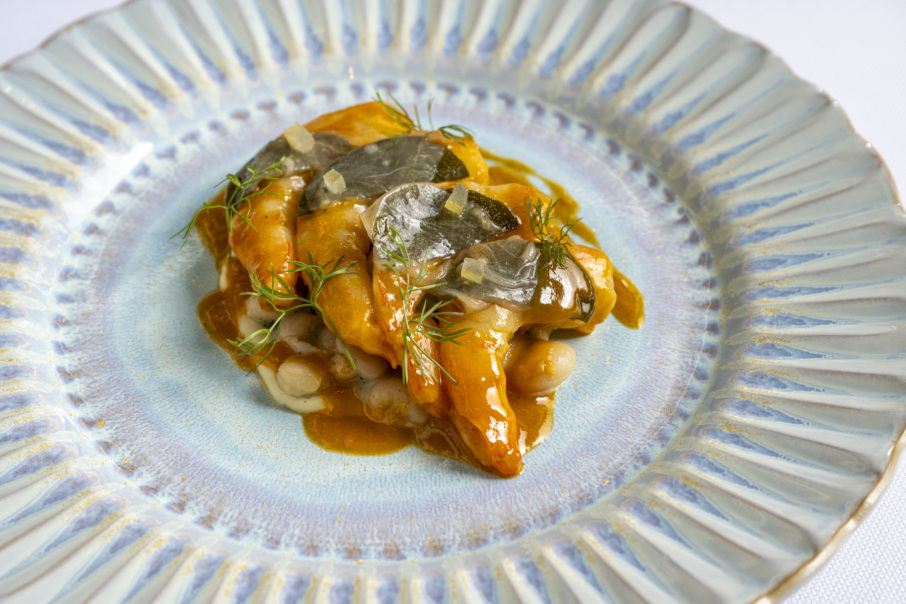
Other parts of the culinary experience peel back the layers of his own life experiences. “For this opening menu, almost every dish is personal to me,” he explains, adding that some dishes might have been inspired by his family history, his global adventures, or a memory from decades ago that shaped his point of view as a chef.
The shrimp Colonnata, for example, nods to a Tuscan village not far from where his family is from. Here, wild shrimp is gently cooked with caper leaf and topped with lardo di Colonnata for some supple richness before it’s finished with the floral zing of bergamot. Elsewhere as a starter, the oysters à la pomme (a delicate combo of round Maine oysters with green apple sorbet and flourishes of sharp horseradish) is a recipe you won’t find in France, but it was inspired by the heady atmosphere and the coastal aromas of the French seaside where Carmellini travels often. “I worked at Gualtiero Marchesi in Milan in the 1990s, and I got yelled at while making risotto a lot,” Carmellini says. So, he insists that there will always be risotto on the menu. For the opening, guests can see how far Carmellini has come with his take on the risotto alla Trevigiana, a white risotto dressed with red wine-braised radicchio and then finished tableside with creamy, buttery taleggio fonduta.
For dessert, maybe you’ll want to try the grapefruit sorbetto A.B.C. — an homage to his grandmother from Friuli. “She spent most of her life in Miami where we had 10 grapefruit trees,” Carmellini says. “And every morning she would eat a grapefruit with a splash of white vermouth on top, a flavor I’ll never forget.”
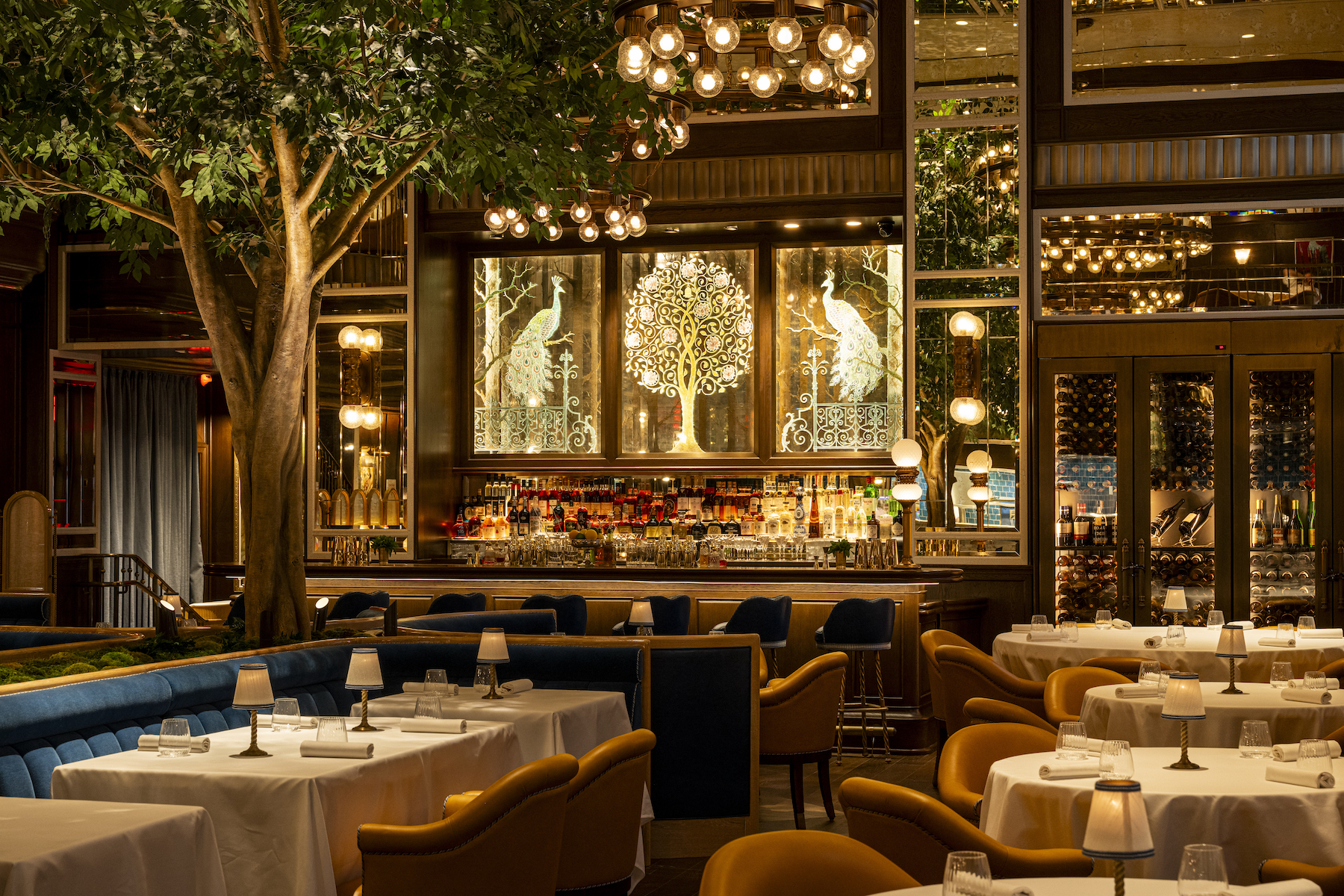
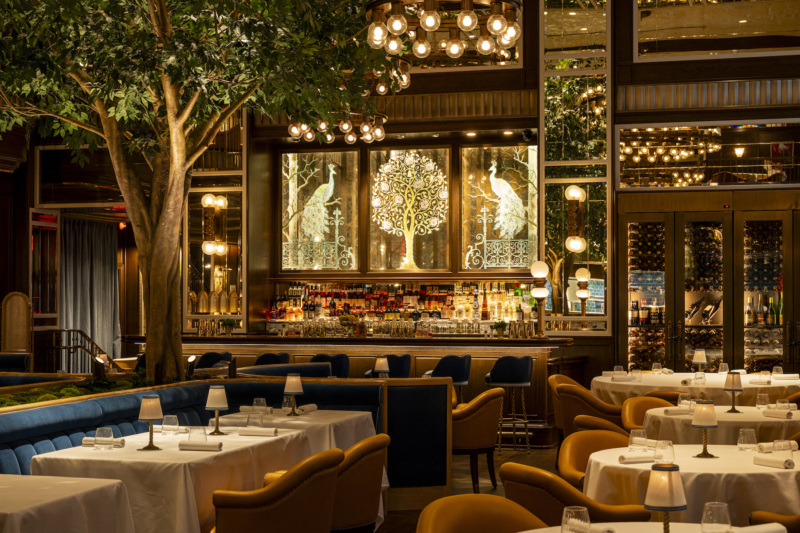
Other parts of the kitchen and dining room are meant to be distinctly New York, where he’s lived for many years. Carmellini loves being able to walk to his restaurants, so he has since relocated to Chelsea to be as close — but not too close — to Café Carmellini as possible. In the middle of this double-height room are two live trees that might evoke visions of iconic restaurants like the Four Seasons. It’s an intentional tribute because Carmellini also enjoys and appreciates the indulgent meals and experiences to be had in these types of places. It was in New York in the 1990s, when he was working as a line cook, when fine dining became an aspirational point of reference for him.
“If I took all the money I’ve spent in great restaurants in Paris, New York, Tokyo, and I invested that in real estate, I would be retired,” he says, jokingly (or maybe not). “And we wouldn’t be having this conversation.” He says he frequents the likes of Jean-Georges and Le Bernardin at least once a year. And being able to do so is part of the reason why he lives in New York. So, while some may think fine dining in the Big Apple might be on its way out, Carmellini isn’t particularly worried. “It’s a silly construct to say that fine dining is over,” he says. “There’s room for every experience. You gotta live a varied life, I think.”
Café Carmellini was conceptualized to be an immersive culinary destination where every piece of the puzzle (not only the food) can feel transporting and special. Carmellini says that the wine list, with some 1,800 labels, is so critical to the Café Carmellini ethos that many food recipes were built with some specific wines in the cellar in mind. He even jokes that, perhaps, master sommelier Josh Nadel’s name should share top billing with his own when it comes to the name of the restaurant. He notes how the rabbit cacciatore on the menu might remind you of wines from Côte-Rôtie, full of subtle olive notes and super aromatic — just like the sauce for this dish. And, of course, there’s Martin Brudnizki’s whimsical vision for the interiors, where a mosaic of marble counters, blue ceramic tile walls, oversized crystal chandeliers, and stained-glass windows of preening peacocks come together like a fevered maximalist fantasy.
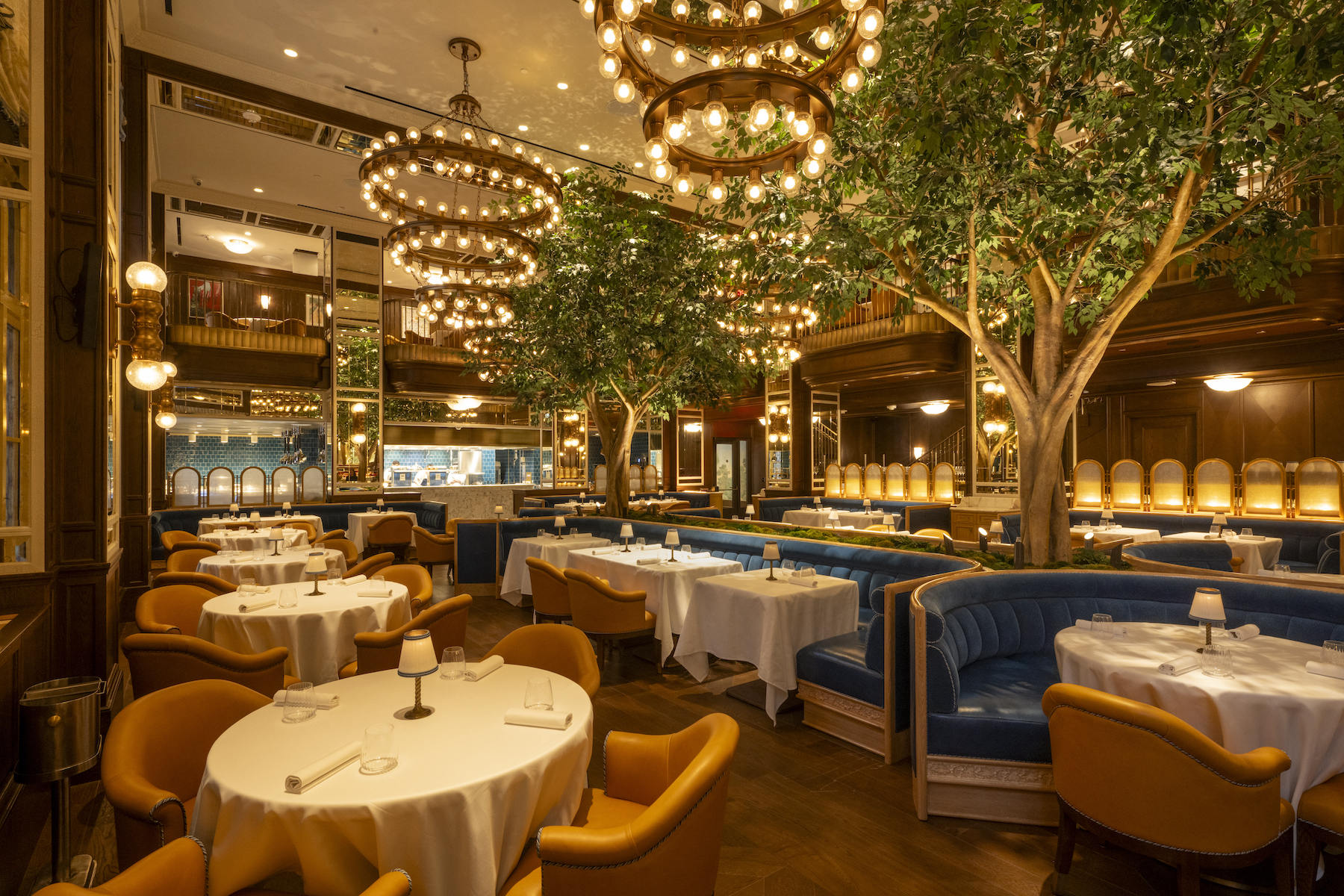
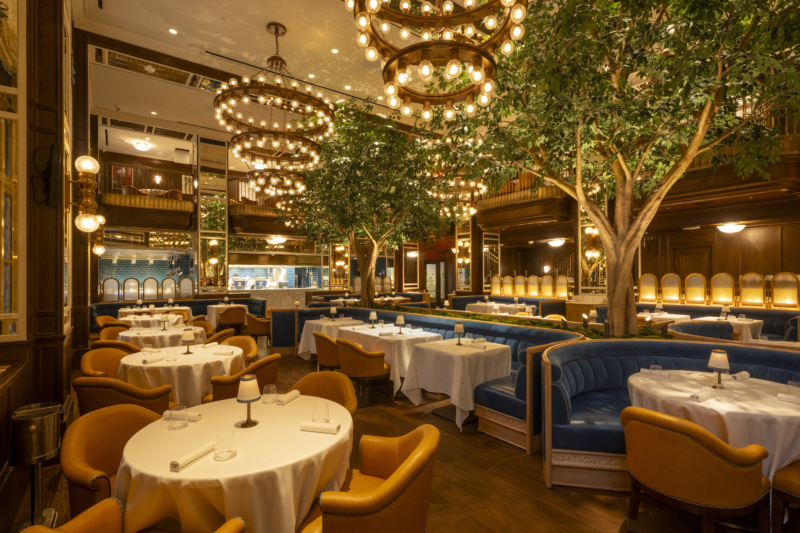
This visual excess won’t necessarily be reflected in the cooking. (And there won’t be the same tableside theatrics that you’ll find at his Seaport chophouse, Carne Mare.) But Carmellini does insist that the highly considered, technique-driven dining experience will taste just as grand, because he plans to be there every day, obsessing over every detail to ensure that the final product is as glorious and opulent as the fine-dining meccas he’s worked and dined at over the years.
“[Because] as a New Yorker, if you can’t go out to a grand restaurant here, then what’s the point?,” he says. “What’s the point of New York anymore?”
Café Carmellini
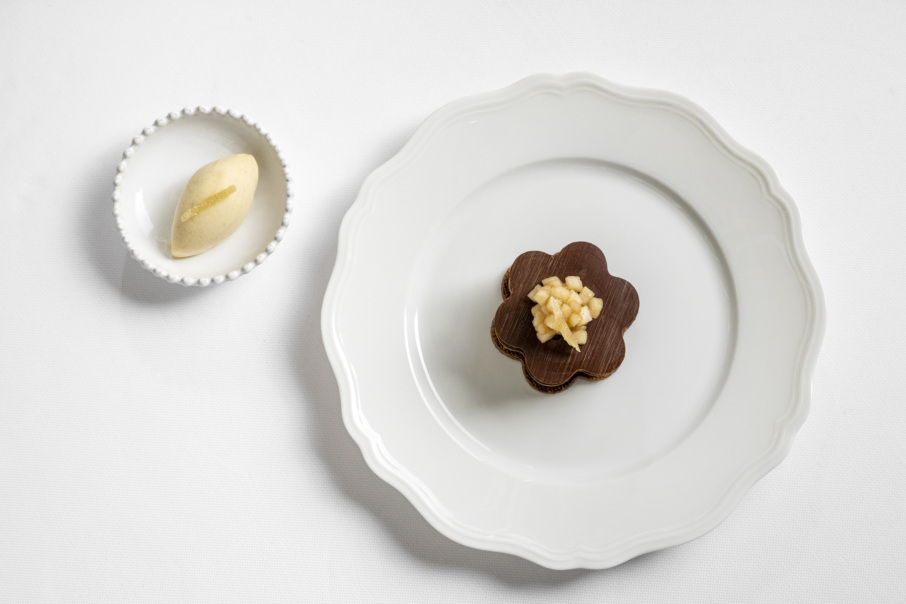
Address: 250 5th Avenue
Hours: Tuesday to Saturday, 5 to 10 p.m.
Seats: 98
Reservations: Reservations, which drop two weeks in advance, are highly recommended.
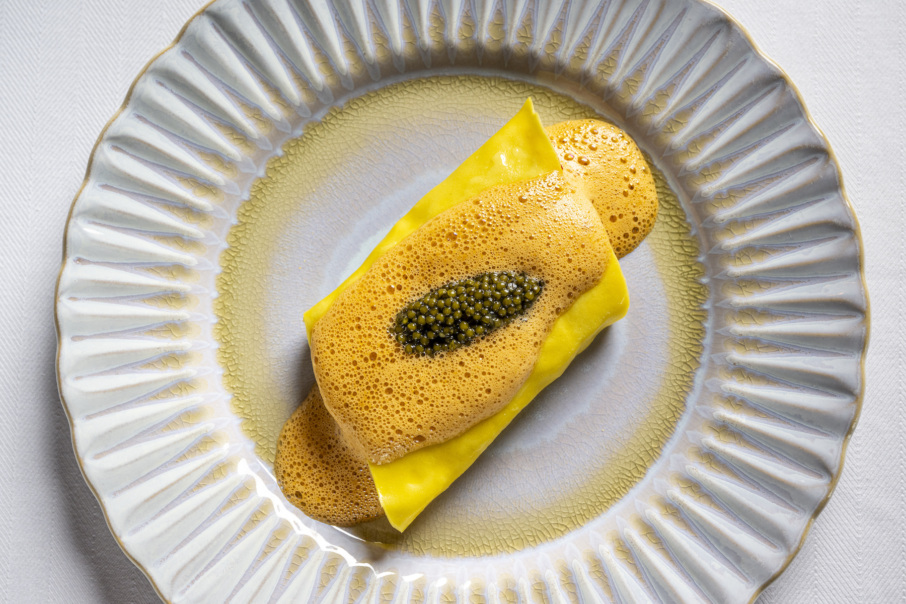
Best for Dining With: Loved ones who appreciate a classic New York night out.
Recommended Dishes: Oysters à la pomme ($28), lobster cannelloni au caviar ($86), sole Normande ($88), rabbit cacciatore ($49), and the chocolate-pear délice ($20)
Pro Tip: A private dining room, called The Club Room, can accommodate up to 20.











